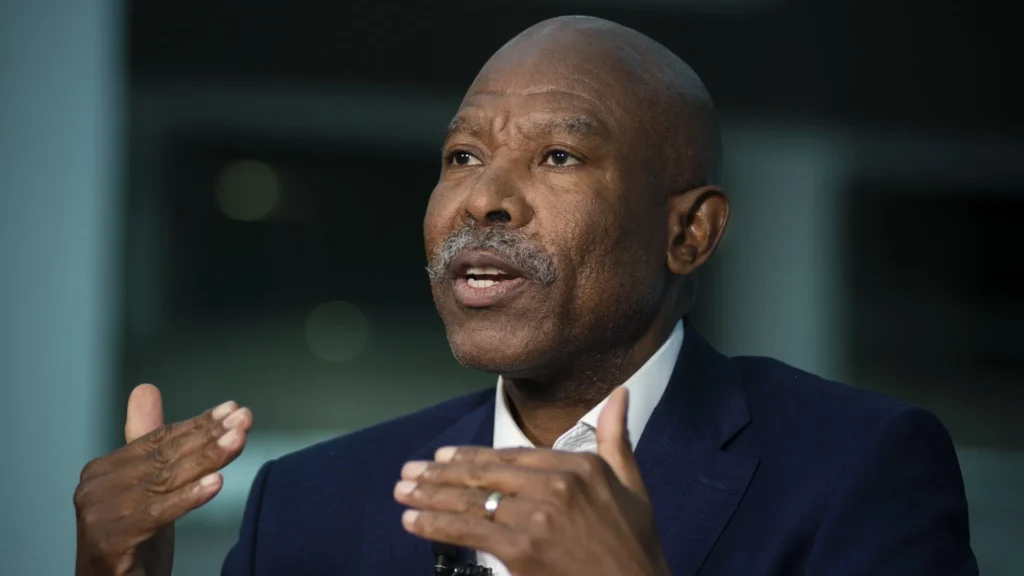President Donald Trump is floating a new round of direct payments, framing them as a yearly “tariff dividend” of up to $2,000 for most Americans.
The idea surfaced after a Truth Social post and TV interviews in which the administration argued that higher tariff revenues could both reduce the deficit and fund payments to households. While the concept has immediate political resonance, it faces steep legislative, legal, and economic hurdles before any checks go out.
Highlights
- Up to $2,000 per person framed as a “tariff dividend” funded by tariff revenues, with potential income caps.
- Treasury Secretary Scott Bessent says the dividend could take “many forms” and details are still being developed.
- No bill text yet and Congress must appropriate funds for any payments, meaning timing and scope are uncertain.
- CBO and outside economists warn that broad tariffs tend to lift prices and dampen growth, complicating the macro case for checks.
- Markets would likely treat the proposal as pro‑consumption but potentially inflationary, with rate‑cut paths and retail earnings in focus.
What exactly was proposed
Trump has teased a plan to distribute up to $2,000 annually to most Americans, funded by tariff revenues. Supporters cast this as returning proceeds from “fair trade” to households.

Early descriptions came via Trump’s public posts and follow‑on press coverage, with Bessent indicating the dividend could arrive via tax credits, direct payments, or other mechanisms rather than a single format.

What exists and what does not
- Exists: A political commitment and public signaling; a menu of possible delivery formats; prior related ideas like Sen. Josh Hawley’s American Worker Rebate Act that would rebate tariff revenue in smaller amounts. See Hawley’s 2025 proposal coverage via Kiplinger and press notices.
- Does not exist yet: Introduced legislation for a $2,000 figure; an official revenue score; a formal eligibility framework; a distribution timeline. As of today, there is no enacted authority for Treasury to disburse such payments without congressional appropriation.
The legislative and legal pathway
Any broad cash transfer requires appropriation by Congress. Tariff revenue flows to the general fund and cannot be earmarked for dividends without new law. Even with budget reconciliation, Senate math and House priorities will determine scope and timing.
The math: can tariffs fund $2,000 per person
Back‑of‑the‑envelope: $2,000 for a majority of adults would imply hundreds of billions a year in outlays. Tariff revenue rises with rates and coverage but also suppresses trade volumes and raises domestic prices. Recent macro assessments caution that broad tariffs can raise inflation and reduce output, even as they generate revenue, complicating deficit reduction and dividend math.
Economic impact if enacted
- Consumption pulse: Direct payments would boost near‑term household spending, especially for lower and middle‑income cohorts with high marginal propensity to consume.
- Inflation trade‑off: Tariffs typically lift import prices and input costs. Checks on top of that could nudge core goods prices and services‑adjacent demand higher, affecting the path for rate cuts.
- Sector effects: Positive near term for discount retail, quick‑service restaurants, BNPL/consumer finance. Negative for import‑reliant retailers and manufacturers facing higher landed costs. Mixed for autos depending on tariff design and EV credits.
- Rates and credit: A consumption pop can push yields higher at the margin. Credit spreads in retail‑exposed high yield could tighten, but supply chain names may face pressure.
Markets lens: how investors might position
- Equities: Barbell between value retail and high‑quality consumer staples. Avoid import‑heavy discretionary names without pricing power.
- Rates: Watch 2s‑5s for growth and inflation impulses; breakevens could drift higher on tariff talk and checks chatter.
- FX and commodities: A stronger dollar is plausible under higher tariff regimes, but tariff‑led frictions can also weaken global trade and risk sentiment. Oil and ags are more sensitive to growth and supply dynamics than to checks themselves.
Business operations checklist
- Pricing power: Refresh pass‑through models for tariff scenarios. Identify SKUs and inputs with the least elasticity.
- Working capital: Build inventory buffers in categories likely to face tariff escalation. Negotiate extended terms where possible.
- Customer strategy: If checks materialize, ready targeted promos for value‑seeking segments; if they do not, avoid over‑ordering on speculative demand.
What to watch next
- Legislative text: Any bill that specifies eligibility, amounts, and a funding mechanism.
- Scoring: CBO or Joint Committee on Taxation estimates on revenue and macro effects.
- Design choices: Direct checks vs. refundable credits; income caps and phase‑outs; monthly vs. annual; family vs. individual benefits.
- Tariff scope: Which goods, what rate, and which trading partners. Scope drives both the revenue pool and the inflation impulse.
Key quotes and signals
- Scott Bessent, Treasury Secretary: the dividend could come in “lots of forms, in lots of ways,” signaling openness to tax credits or direct payments while details are developed.
- Policy cross‑current: Earlier administration framing emphasized deficit reduction alongside tariffs, a tension with large‑scale cash transfers.
Context and precedents
The closest legislative analogue is Sen. Hawley’s 2025 American Worker Rebate Act, which proposed smaller annual rebates funded by tariffs. It did not advance, but it previews mechanics and politics around returning tariff revenues to households.
Bottom line
The “$2,000 tariff dividend” is a headline‑grabbing idea that could deliver a near‑term consumption boost, but the path runs through Congress, hard budget math, and macro trade‑offs. Investors should track bill text and scoring, while operators should stress‑test pricing, margins, and demand plans under tariff‑plus‑transfer scenarios.



